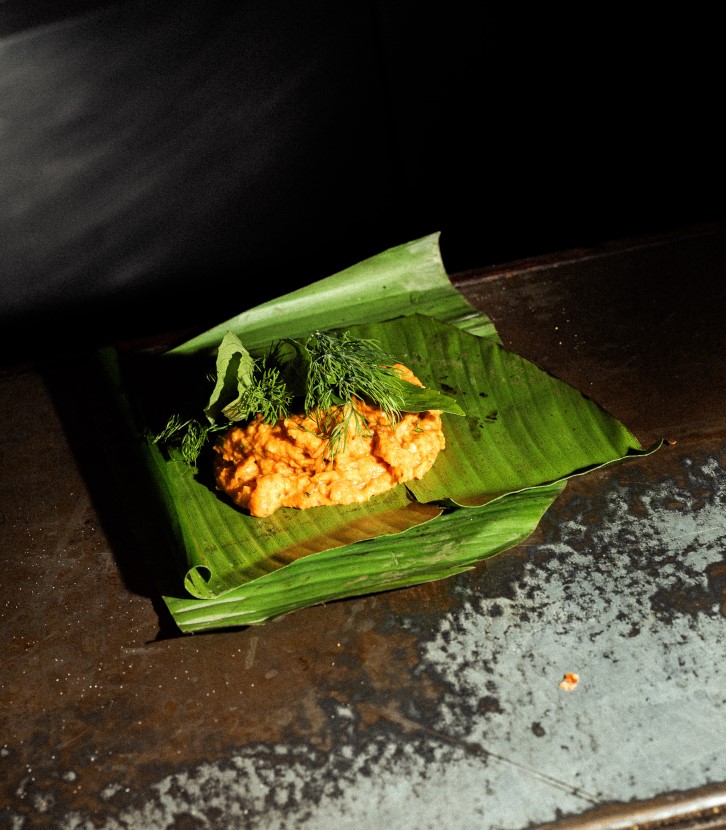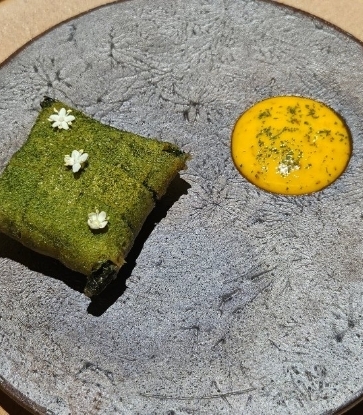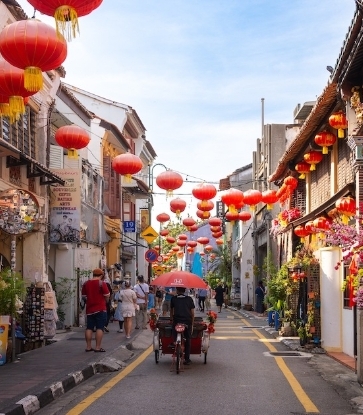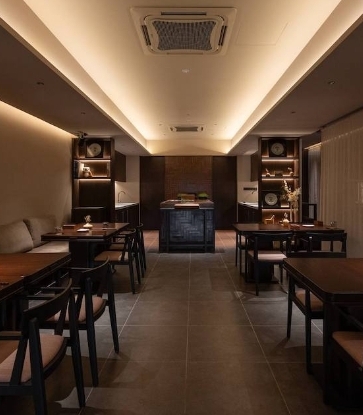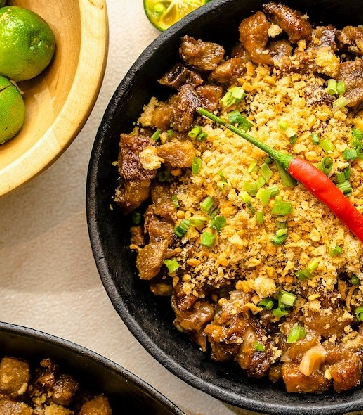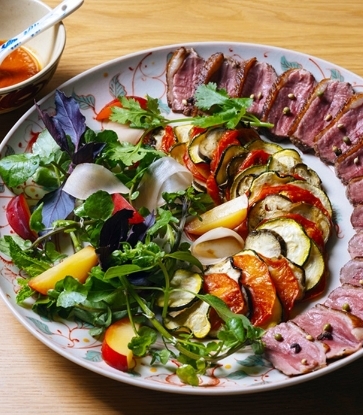Sardaarji in George Town, Penang, was the brainchild of former civil servant Ranjit Singh, 69, who decided to start a food business after his retirement back in 2018. Wanting to keep himself occupied after having spent nearly four decades working for the Penang City Council, he chose to start a small Punjabi food kiosk near Penang’s Bayan Lepas free-trade zone, where multinational companies congregate.
Ranjit’s North Indian offerings proved to be a hit with the expatriate North Indian community there, who were yearning for an alternative to the more pervasive South Indian-Tamil cuisine in Penang. Sardaarji is currently recognised with a MICHELIN Bib Gourmand.

The runaway success of his first venture spurred Ranjit to consider opening a proper Punjabi restaurant, which would be the only one of its kind in Penang then.
Thus, in late 2018, Sardaarji was born: a collaborative family effort amongst Ranjit, his son, Ranmeet Singh, daughter, Sangeeta Kaur, brother, Sarjit Singh, and son-in-law, Randhir Singh. The restaurant name, “Sardaarji”, an honorific Punjabi title, was chosen to reflect the respect accorded by the restaurant to each and every one of its customers.
We sat down with Ranmeet Singh, who manages the restaurant these days, to talk about his experience and challenges faced in running Sardaarji.

Can you tell us when and how Sardaarji was started? Is this a family venture or a business decision by yourself?
Sardaarji was the brainchild of my father, Ranjit Singh, who wanted to keep busy after retiring from his job of 37 years at the Penang City Council. This was back in early 2018, when we started a small food kiosk near Bayan Lepas, the free-trade zone where many multinationals operate and has a large Indian expatriate community.
(Left Image: Gopalan, Ranmeet, and Randhir Singh)
We basically offered the kind of home-cooked food that we, as a Punjabi family, would eat at home. Turns out our food was a huge hit with the Indian expats there as they wanted something different from the usual Tamil cuisine that usually characterises Indian food in Penang.
My father saw the potential to expand our business into a proper restaurant setting, but that required more seed money. Luckily, my father’s brother, Sarjit, was very keen to get involved. So, too, his son-in-law, Randhir. So, we all got together and started looking at the options available.

What challenges did you face during the initial days of operation?
The biggest challenge we faced was that no one in our family has any restaurant background or experience. We only possess the enthusiasm, but not the know-how!
But, by God’s grace, that was when Gopalan Muthiah appeared! Gopalan is an old friend of my father's, and he used to work for a large, well-known South Indian restaurant group here in Penang from 2012 to 2019. He is the quintessential man-of-all-trades — one who can fix or do anything, from procuring lights for a dining room, to sourcing raw ingredients that a Punjabi kitchen needs.
Another challenge we faced was the lengthy immigration processing time required to get our chefs in from Punjab, which threatened to derail our schedule to open on time. Thankfully everything fell together at the last minute — the chefs obtained their work permits two weeks before we were due to open for business!
What constitutes an authentic Punjabi meal, and what are the must-have dishes?
First and foremost, every Punjabi meal has to have chapati — flatbread griddle-cooked on a hot “tawa” (round, flat metal cooking pan). It is ever-present in every Punjabi meal, accompanied by a dal (yellow lentil) curry.

Then, we have the two popular starters: pakora — various types of vegetables, spiced and covered in chickpea flour (also known as “besan” or “gram” flour), then deep-fried into golden-brown nuggets that are delicately crisp on the outside, and moist on the inside. The other is the samosa — deep-fried pyramidical-shaped pasties filled with spiced, mashed potatoes, peas, cashew nuts, and other ingredients.
Other must-have Punjabi dishes include the masala-coated Amritsari Fish, and Sarson Ka Saag — a delicately-spiced stewed spinach dish. Punjabis are really big on spinach.

How did you conceptualise Sardaarji's menu?
I researched Indian restaurant menus online to suss out what dishes have the most global appeal. I also looked at food offered by existing, popular North Indian restaurants around the region to have an idea what dishes will work for our intended target clientele. After our first year of business, I also re-looked our menu items to identify and remove unpopular or slow-moving ones, and replace them with new offerings.
How do you feel about the Indian food landscape in Penang/Malaysia? Do you see it progressing?
Malaysia’s Indian food landscape has always been closely identified with Southern Indian, especially Tamil, cuisine. It’s always been synonymous with banana leaf rice, or Southern Indian breakfast dishes like thosai, idli and Pongal rice. The Tamil-Muslim influence is also very strong — especially in Penang, where the presence of nasi kandar is all-pervasive, besides the roti canai, murtabak, and roti bakar places.
Who does the cooking at Sardaarji?
We have three very dedicated and experienced cooks from Punjab, India, to ensure authenticity in our cooking. But I still personally ensure proper quality control on every single dish that comes out of the kitchen. We are blessed to be able to procure all the ingredients that we need locally, so there is no question of having to compromise.

What were the challenges you face in your day-to-day operations?
Our main challenge nowadays involves the rising prices of ingredients. The world economy was just recovering from challenges imposed by the COVID-19 pandemic that raised prices throughout the supply chain when the Russia-Ukraine war started. That has tripled the price of wheat, a key ingredient for our chapati breads.
Also, it’s not easy to bring in foreign chefs to work to Malaysia, so we are trying to train local chefs whilst making sure the authenticity of cooking is maintained.
What impact does the MICHELIN Bib Gourmand recognition have on Sardaarji?
The MICHELIN Bib Gourmand recognition caught us by surprise. We certainly did not expect to be listed in the MICHELIN Guide, but it has certainly elevated our presence. The listing has motivated a lot of diners to want to come and give Sardaarji a try.
What's next for Sardaarji?
At the moment, we are thinking of opening a Sardaarji branch in Kuala Lumpur, offering Punjabi as well as other Northern Indian culinary offerings.
Sardaarji is located at 6 Lebuh China, George Town, 10200, Malaysia.




